藤原ヒロシと高橋盾の対話。@Revolution, Sendai
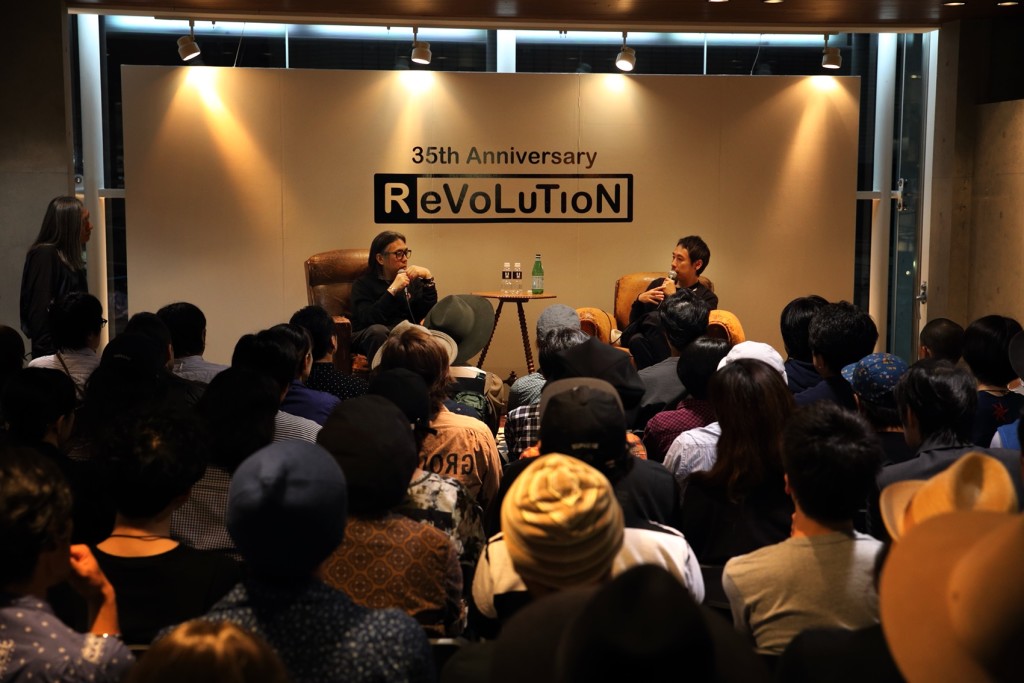
2016年7月8日、宮城県仙台市のショップ『Revolution』にて、同店の35周年を記念したトークイベントが開催された。登壇者は、フラグメントデザインを主宰する藤原ヒロシと、アンダーカバーのデザイナーの高橋盾。かねてからの盟友であり、現在もトップクリエイターとして活躍を続けるふたりは、いま何を考え、何に興味を持ち、どのような思いでものづくりに臨んでいるのか。和やかな雰囲気のなかでざっくばらんに繰り広げられたトークの模様をお届けしよう。
Photo_Kentaro Matsumoto | Edit&Text_Issey Enomoto
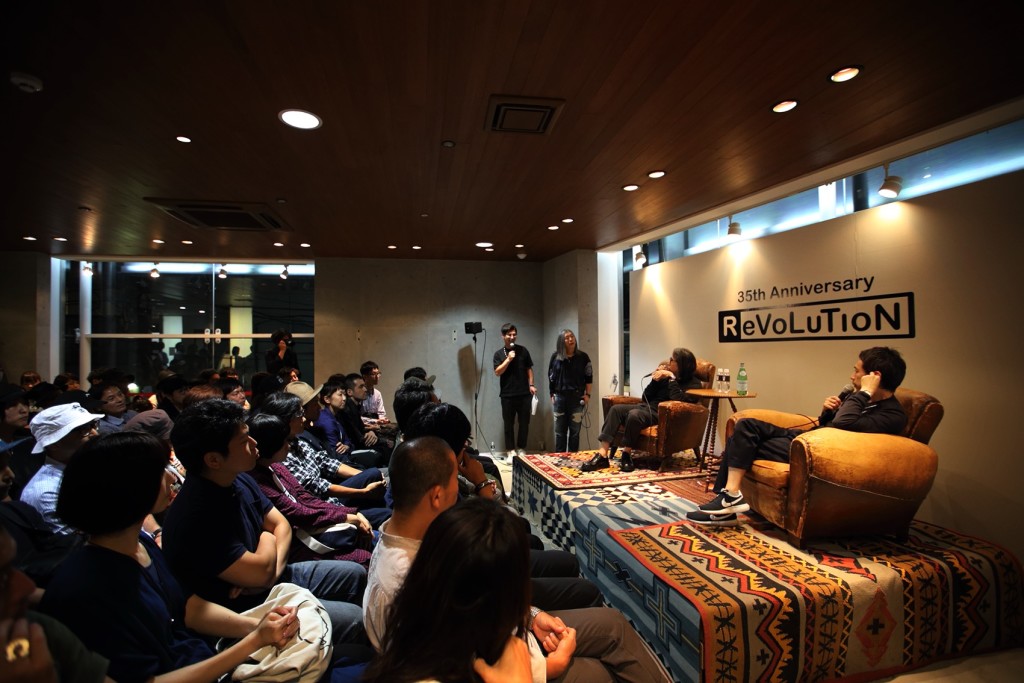
「これをお願いするならヒロシくんだな」というポイントがある(高橋)
——ヒロシさんとジョニオさんが、このようなかたちでトークイベントをやったことは、過去にあるのでしょうか?
藤原:たぶん初めてじゃないですか。
高橋:初めてですね。
(会場から拍手)
藤原:いや、拍手は大丈夫です。あまり期待しないでください(笑)。
——雑誌で対談されたことはありますよね?
藤原:もちろんあります。
高橋:何度かありますね。
——仙台については?
藤原:ほぼ毎年のように来ているので、また戻ってきたなという感じです。
高橋:僕もそうですね。今日は2年半ぶりくらいかな。
——先日のパリコレクションでヒロシさんはアンダーカバーのショーの選曲を担当されたそうですが、なぜジョニオさんがヒロシさんに依頼されたのか、その経緯を教えていただけますか?
高橋:今回のコレクションでは、リラックスした大人な雰囲気のショーをやりたいと考えていて。そのなかで、音楽をお願いするならヒロシくんだなと思って、すぐに連絡しました。
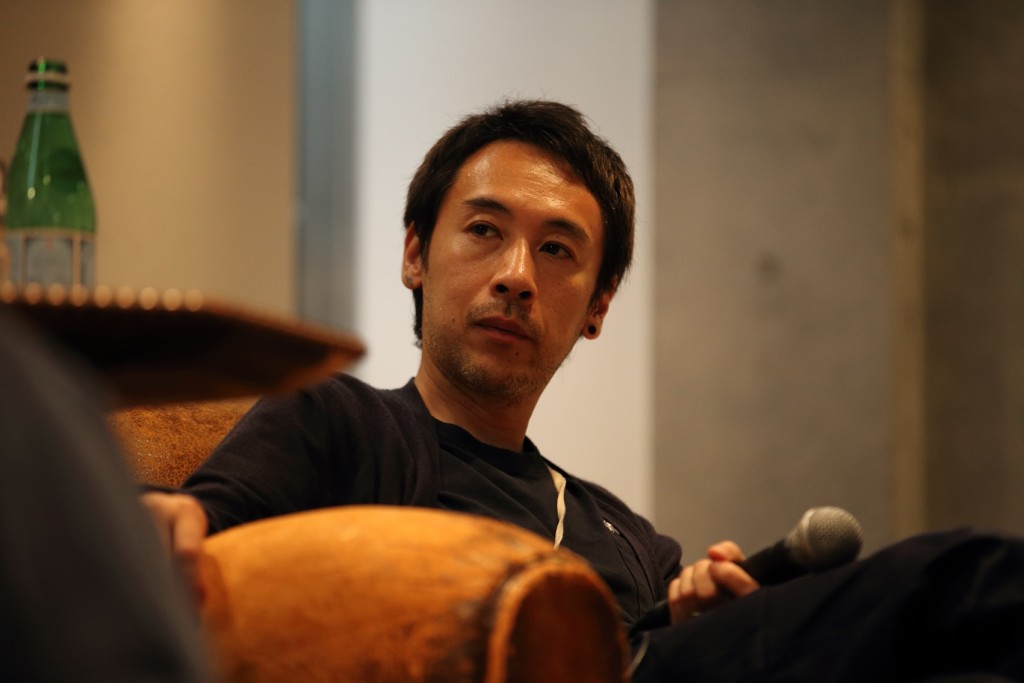
——ヒロシさんはアンダーカバーのショーの選曲をするにあたって、どのようなことを考えましたか? ショーならではの難しさなどはありましたか?
藤原:特に難しいといったことはなかったですね。テーマになる曲もある程度決まっていたので、それを軸に考えた感じです。自分はショーの音楽ってほとんどやらないけど、実際にやってみて、デザイナーと音楽を通じて交流できるのは面白いと感じました。
——ところで、ヒロシさんと言えば最近、ルイ・ヴィトンとのコラボレーションが話題になっていますが、きっかけはどのような感じだったのでしょうか?
藤原:ある日、キム(・ジョーンズ)から「こういうのをやりたいんだけど」ってイメージを見せられて。こちらからも「それなら、こういうのもどう?」という感じで、何度かやり取りして。半年もかからずにできあがった感じですね。
自分自身、コラボレーションに関しては、こちらから「いっしょにやろう」と声をかけることはほとんどありません。ほとんどの場合は受け身です。自分はもはや、まわりのみんなより歳上になってしまった。歳上から頼まれたら、嫌でも断りづらいだろうなと(笑)。
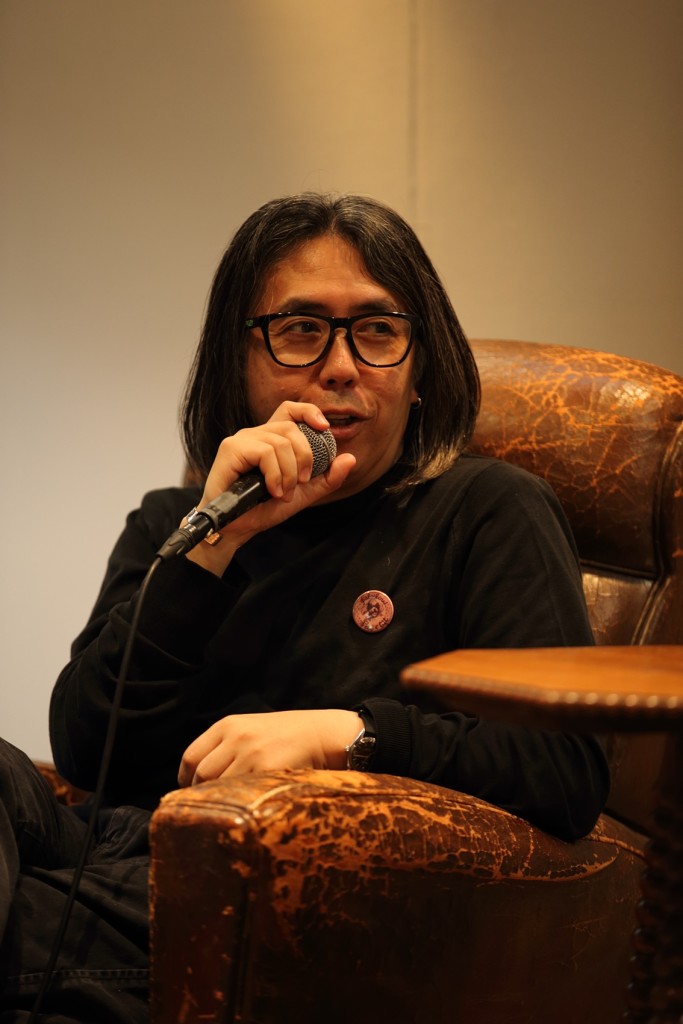
——ヒロシさんとジョニオさんのコラボレーションプロジェクトであるAFFAについてはいかがですか?
藤原:AFFAは、不定期だからこそできる。また、決められた個数もないから、それぞれがやりたいことがあれば、少ない個数でもできるという感じで。
高橋:僕のほうも、こういうのがいいな、こういうのをほしいな、というときにヒロシくんに連絡して。それが不定期にあるという感じです。
藤原:やらなきゃいけないという感じではないので、僕にとってはラクだし、楽しいですね。
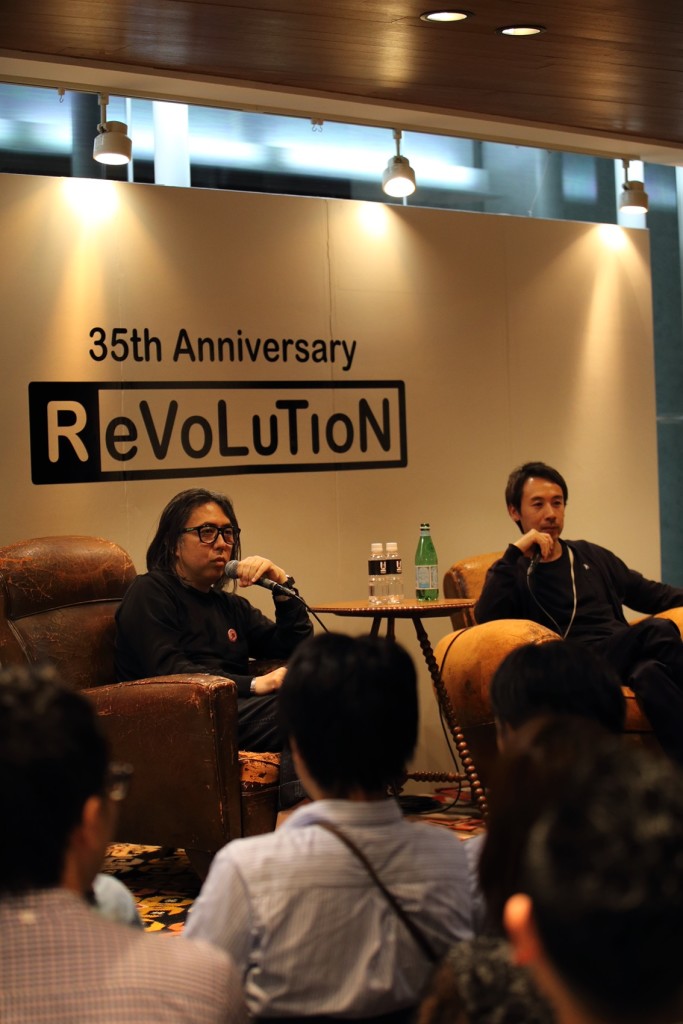
——ヒロシさんとジョニオさんは、たまに会って話したりするんですか?
藤原:実は滅多に会わないんですよ。1年に数回程度。たまに何かあると、事務所によって打ち合わせをしたついでに、世間話をする。でも、会わないときは3年くらい会わないときもある。
高橋:昔は(マンションの)隣の部屋に住んでたこともあるけど……。
藤原:でもそのときもあまり会わなかったよね?
高橋:ベランダを行ったり来たりしてたけど(笑)。
藤原:まあ、滅多に会わないからこそ、久しぶりに会ったときに、そして話し合ったときに、お互いが持っていないものが出て、いいものができるのかもしれない。
高橋:そうかもね。自分のなかに「これをお願いするならヒロシくんだな」というポイントがあって。これからもそういう機会は出てくると思います。
そういえばこの前、ヒロシくんから「普通のをやれば」って言われたのが、自分としてはすごくハッとさせられて。ショー的なものじゃなくて、なんでもないものをやればいいのに、って。そういうふうに、たまにヒロシくんから言われる意見はすごく参考にしたいなと。
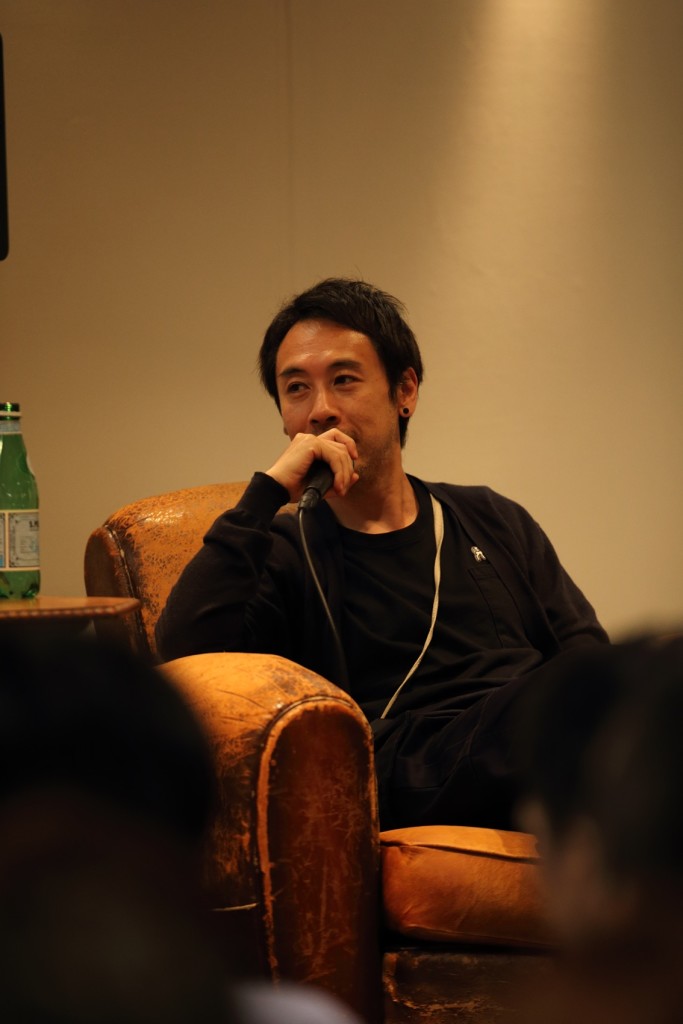
——ジョニオさんはザ・シェパードという新しいラインを始められるそうですが、それについて詳しく教えていただけますか?
高橋:自分は今年47歳になるのですが、だんだん格好もシンプルなものになってきて。これまでも自分がつくった服を着てきたけど、お客さんが求めるものと、自分が着たいものに、だいぶズレが生じてきた。であれば、自分の普段着は無理せず、パブリックイメージみたいなものも気にせず、自分のために着られるブランドをつくりたいなと思って始めました。
藤原:単発でやるんじゃなくて、今後も続けていくの?
高橋:うん。続けていきますよ。

——ところで、ヒロシさんは大学の講師もやってるんですよね。
藤原:はい。講義をすることもあるし、展覧会に向けて作品をいっしょにつくることもあります。
高橋:講義って何についてやるの?
藤原:ポップカルチャー。
高橋:へぇ。受けてみたいな。
藤原:やりましょうか? いまから。
高橋:お願いします(笑)。
藤原:そうだな、何を話そうかな……。そうだな、人間って、昔は猿だったわけですよね。猿だったときは、そのへんにあるものを食べていた。味気ない生活を送っていたわけです。で、どんどん進化していくうちに、狩りをするようになったり、コメを作るようになったりして、そのうちおいしいコメをつくろうと工夫するようになった。そのためには、土地を耕すことが必要になる。「耕す」という言葉は「カルチュア」といって、それは「耕す」を意味するラテン語が語源なんです。だから、カルチャーというのは、心を耕すこと。つまりポップカルチャーは、仕事に疲れた大衆が、生きていくうえで心を耕して、面白いことを自分なりに見つけようということなんです。……たとえばこういう授業をやってます。
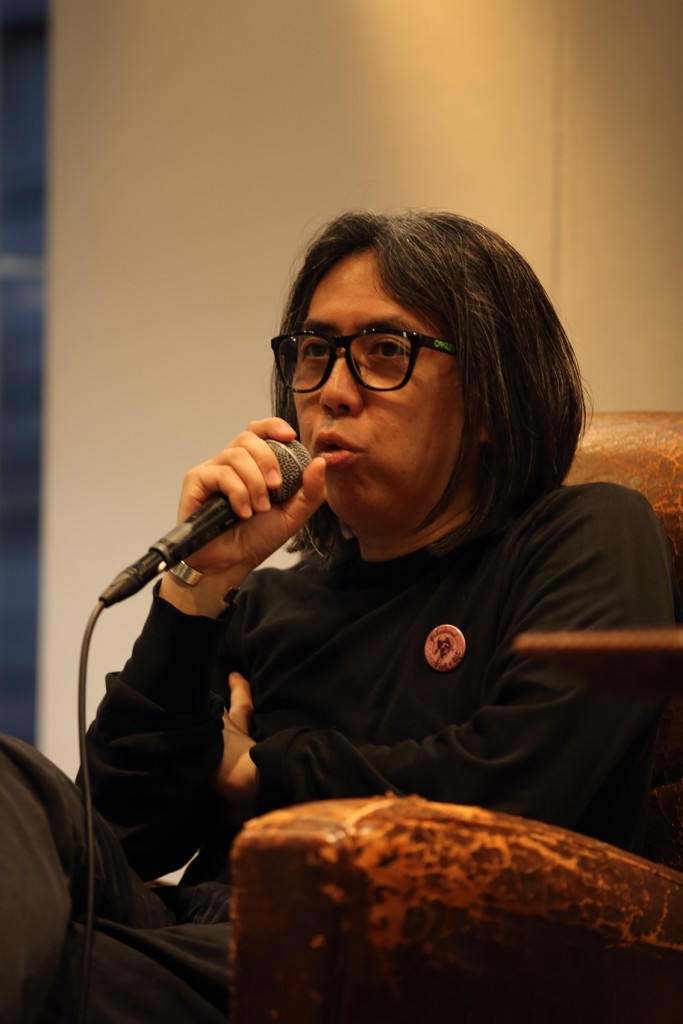
その人が何に影響を受けていまに至るのかに興味がある(藤原)
——最近気になるモノやコトはありますか?
藤原:どうだろう、なにかあるかな……。ジョニオはなにかある?
高橋:いや……そういう感じのものは、もとから自分にはなくて。そういえば、先日まで、Ring of Colourをやらせてもらって、自分にはそんなに発信するネタはないなあと。興味があることはなくはないけれど、それを発信しても、反応する人は少ないだろうし。その点、ヒロシくんの情報発信力はすごいなあと思う。
藤原:でも、僕らも、新しい情報を発信することにはあまり重きは置いていない。新しい情報はいたるところにあるし、誰でもピックアップできる。自分たちのアーカイブだったり、過去に接してきたなかで面白いと感じたものだったり、そっちのほうに興味がある。
高橋:ああ、そういえばそうだったよね。過去にさかのぼって自分が影響を受けたものを紹介してほしいとヒロシくんに言われて(Ring of Colourを)始めたんだった。それ、忘れちゃってた(笑)。
藤原:じゃあ、復活しましょう(笑)
高橋:言われてみれば、自分が影響を受けてきたことは、まだまだたくさんあるかな。
藤原:僕はどちらかというとそういうのが気になるんですよ。その人が生まれて初めて買ったCDは何なんだろうとか、過去にどんな映画を観て、どんな音楽を聞いて、何に影響を受けて、いまに至るんだろう、と。
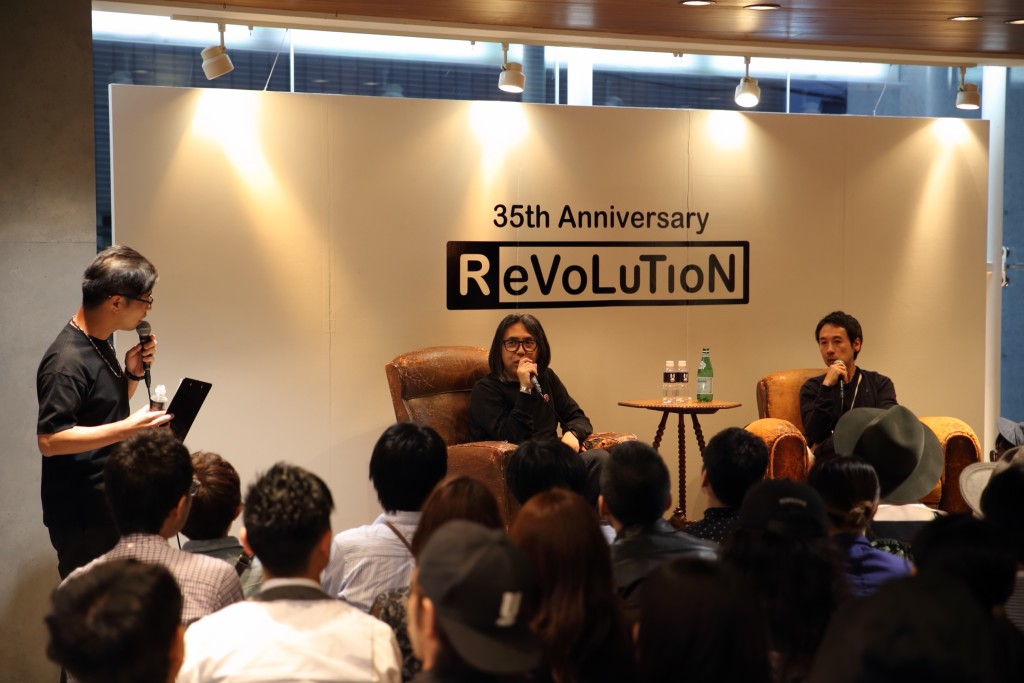
——ちなみに、おふたりは、過去のモノを取っておくほうですか?
藤原:僕は基本的にモノを捨てないので、いままで買ったモノはほとんど持っています。昔、ジョニオといっしょに作ったMA-1なんかも、いまでも持っている。でも、ジョニオは……。
高橋:持ってないね。初期のものは何ひとつ持ってない(笑)。俺はすぐ人にあげたり捨てたりしてしまうから。でもだいたいはあげなきゃよかった、捨てなきゃよかったと、後悔するんだけど。
藤原:ミニマリストになりたいとも思いつつ、モノは増えていく一方だよね。だいたいクリエイターの事務所ってきれいに片付いていると思うけど、うちは本当にごちゃごちゃ。いつミヤネ屋が取材に来てもおかしくないくらい(笑)。

Special Thanks_Revolution, Sendai
http://www.revolution-jp.com
- Keywords:
- Others (Clothing)
- Others (Life)
- Others (Trips)




